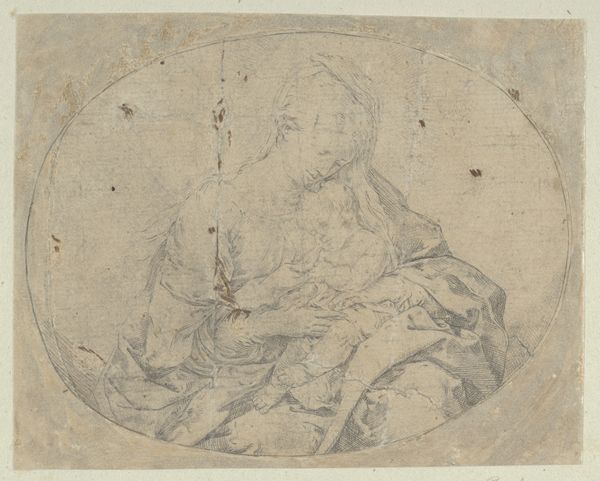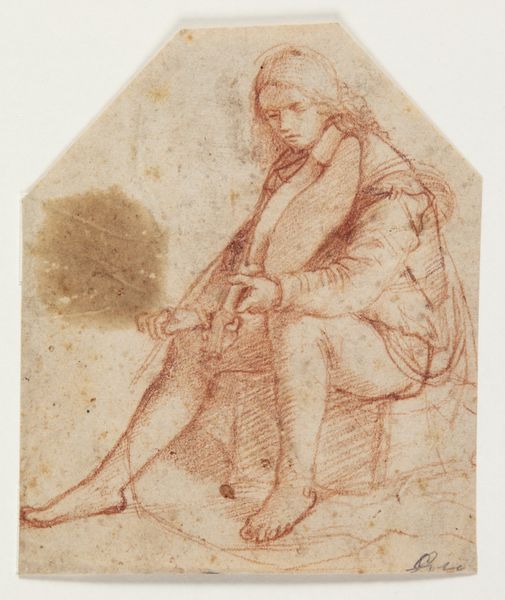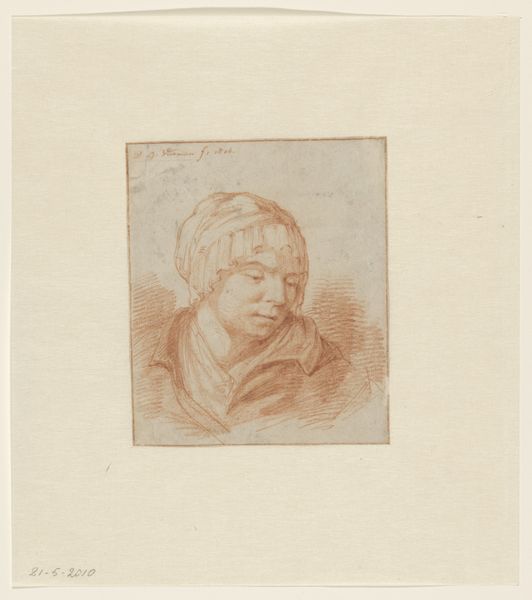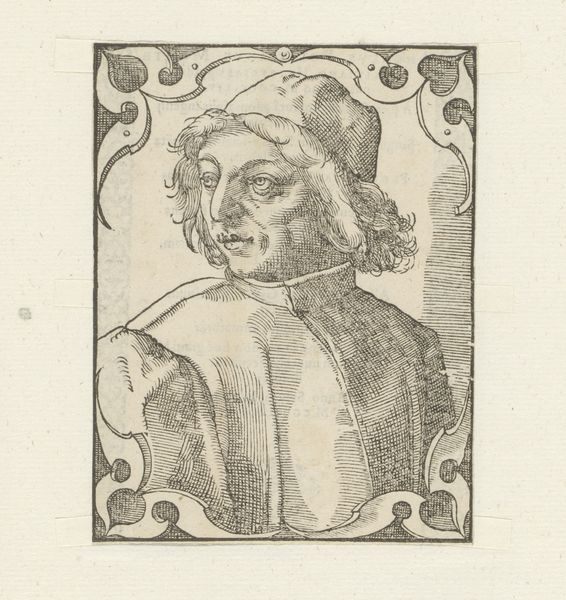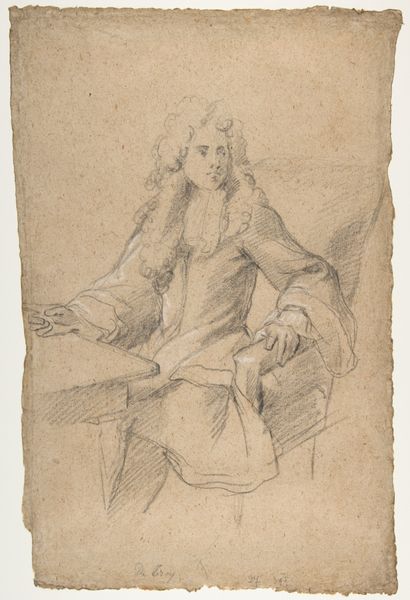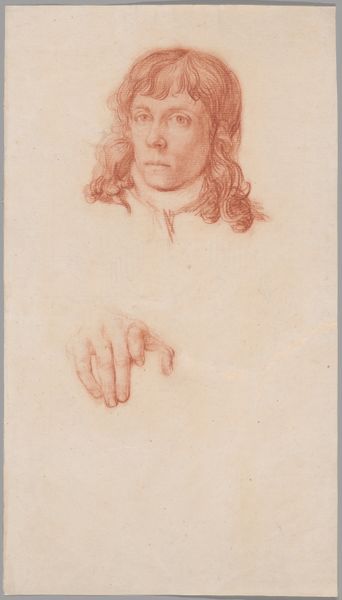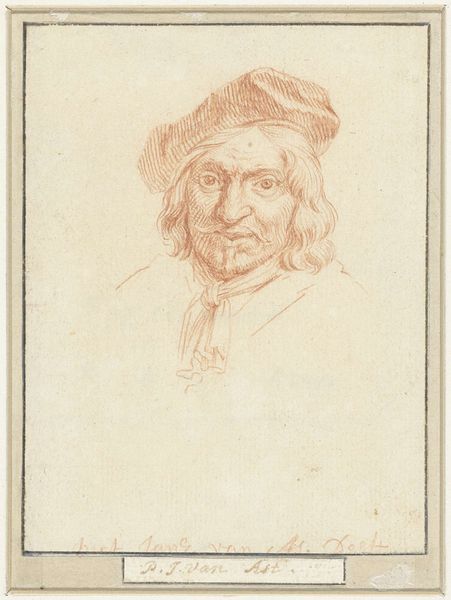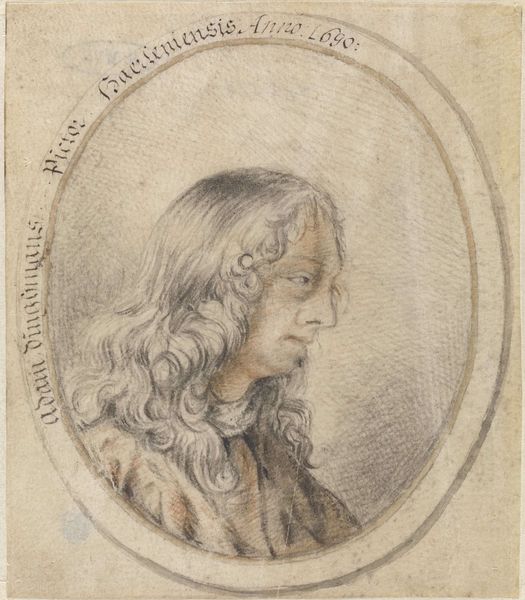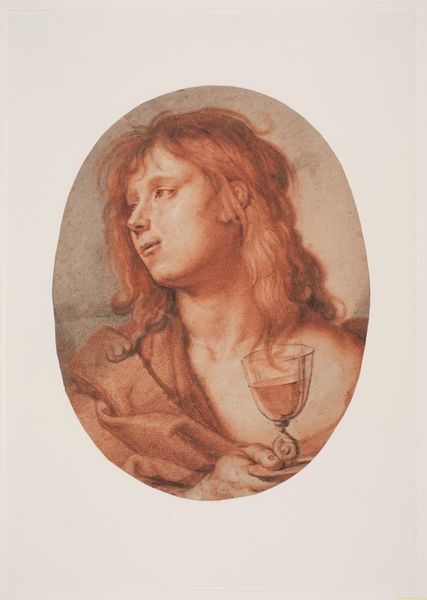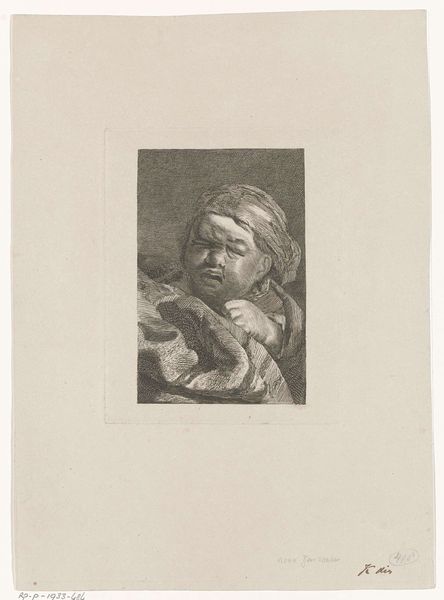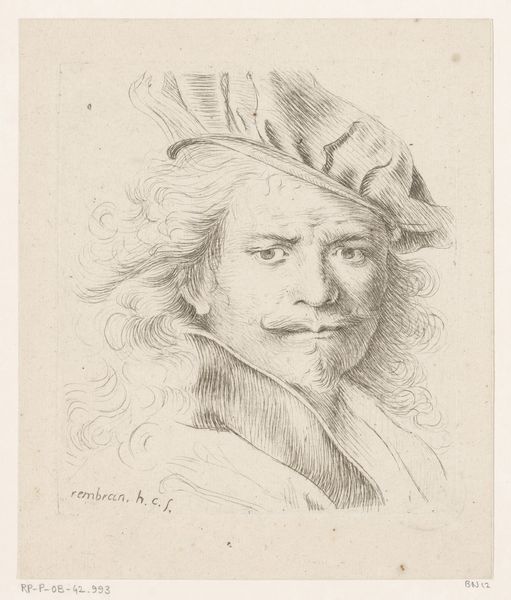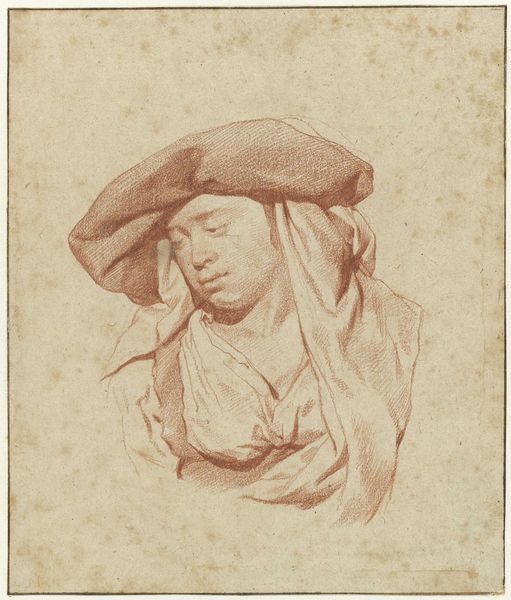
Læsende ung mand med et tørklæde svøbt om hovedet. 1609 - 1670
0:00
0:00
drawing, paper, charcoal
#
portrait
#
drawing
#
dutch-golden-age
#
charcoal drawing
#
paper
#
oil painting
#
genre-painting
#
charcoal
Dimensions: 450 mm (height) x 332 mm (width) (bladmaal)
Curator: Immediately, I’m drawn to the warmth of the image. It feels like a study in quiet contemplation. The reddish-brown tones give it an intimate and cozy atmosphere. Editor: Agreed. It has an interesting muted quality to it. Looking at the artwork a bit closer, what we have here is a drawing entitled “Læsende ung mand med et tørklæde svøbt om hovedet,” or "Young Man Reading with a Headscarf," created sometime between 1609 and 1670 by Karel van Mander III. It's held at the SMK, the National Gallery of Denmark. The work seems to be rendered in charcoal on paper, evoking a subdued kind of energy. Curator: The headscarf is intriguing. Its form feels soft, yet the folds create this really nice contrast that suggests a quiet drama, drawing focus to the act of reading and, therefore, the knowledge sought after at the time. The figure's gaze is downcast, emphasizing the inner world of thought and imagination. This symbol may not just indicate a chosen attire; maybe the wrapping and its symbolism refer to the limits, self-imposed or not, within society. Editor: Absolutely. The turban or headscarf immediately positions this figure within a certain historical context—likely a visual signifier of wealth and access to exotic trade or academic pursuit. However, if we unpack its semiotics further within the sociopolitical context of 17th-century Northern Europe, its presence could point to larger narratives about cultural appropriation, exoticism, and even the subtle subjugation of foreign symbols within the dominant Western gaze. In that regard, the headscarf operates as more than a fashionable accessory. Curator: I see your point. It’s impossible to ignore the colonial undercurrents, given the period. However, I also can’t help but return to this idea of “internal escape” or the headscarf symbolizing almost a protection from external gazes. It seems the artist gives a sense of the quiet resistance made possible through literacy. He provides, not just social documentation, but documents a state of mind made possible through the consumption of written works, knowledge and thought. Editor: A quiet resistance through literacy. Yes! That adds yet another vital layer. By allowing space for these nuances to coexist— the external display of appropriated symbols along with an internal sense of “quiet rebellion” — art allows us to consider the multiple facets of any cultural practice. Curator: Indeed. It is in moments like these we're reminded that art, and its reading, becomes its own form of self and social study. Editor: An engaging reminder that art historical perspective is not only relevant but absolutely necessary for interpreting our present realities, as well.
Comments
No comments
Be the first to comment and join the conversation on the ultimate creative platform.

